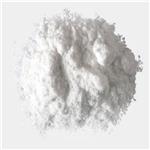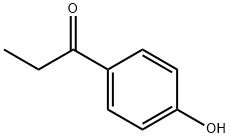The research of 4'-hydroxypropiophenone in experimental animals
Oct 11,2025
Introduction
4'-Hydroxypropiophenone (also kown as p-hydroxypropiophenone;Figure 1),a potent inhibitor of azo-dye carcinogenesis in the rat, was found to have no effect on the incidence of spontaneous hepatomas in adult male C3H mice.[1] 4'-hydroxyphenylacetone is the key intermediate for the preparation of ritodrine. Herein the effect of 4'-hydroxypropiophenone on experimental animals was introduced.

The effect of 4'-hydroxypropiophenone on fibrosis[2]
Dodd, Goldberg, Lawson and Robinson in I938 introduced 4'-hydroxypropiophenone as an estrogenic substance with a chemical structure comprising an exact one-half of a stilbesterol molecule. Robertson, Griffin and Richardson and Baba showed that only negligible fibrosis or none at all appeared in the livers of rats which received 4-dimethylaminoazobenzene (DAB) and 4'-hydroxypropiophenone simultaneously for 5 to 6 months. These authors did not propose a mechanism for the inhibitory action of 4'-hydroxypropiophenone on DAB-induced fibrosis.In the present investigation CCl4 was used to induce fibrosis, cirrhosis and hepatoma. Mice were exposed to repeated CCl4 administration and were simultaneously given 1 percent 4'-hydroxypropiophenone in the diet. Light and electron microscope studies were carried out in order to evaluate: a) the changes in hepatic mesenchymal elements after long-term exposure to CCl4; b)the process of fibrogenesis in the liver during chronic CCl4 injury and to ascertain whether 4'-hydroxypropiophenone had any effect on this process; and c) whether 4'-hydroxypropiophenone acted selectively as a specific inhibitor for DAB-induced fibrosis,or as a general inhibitor of this pathologic reaction when induced by other methods. The effect of 4'-hydroxypropiophenone on the development of liver fibrosis induced in mice by chronic carbon tetrachloride (CCl4) poisoning was investigated. It had been shown that 4'-hydroxypropiophenone inhibited hepatic fibrosis and cirrhosis in rats fed dimethylaminoazobenzene (DAB).Twenty-six mice were fed a semisynthetic diet containing 1 percent 4'-hydroxypropiophenone and 24 mice were given the same diet but without 4'-hydroxypropiophenone . All these animals received repeated oral or subcutaneous administrations of 0.1ml of 40 percent CCl4 in olive oil 3 times weekly.
4'-Hydroxypropiophenone alone had no visible effect on the liver in 5 control mice given no CCl4 as compared with 5 controls given neither 4'-hydroxypropiophenone nor CCl4. 4'-Hydroxypropiophenone had a striking effect on the process of fibrogenesis. A large quantity of reticulin fibers appeared even after 54 doses of CCl4, but there were few well-developed collagen fibers. On the other hand, in mice at the same stage of CCl4 administration but not given 4'-hydroxypropiophenone, there were few reticulin fibers but an abundance of well-developed collagen. It is suggested that 4'-hydroxypropiophenone interferes with the normal maturation of collagen during the process of fibrogenesis.
The effects of 4'-hydroxypropiophenone on the thyroid gland[3]
Recent reports indicate that 4'-hydroxypropiophenone shows a marked ability to alleviate the signs and symptoms of thyrotoxicosis. Perrault has postulated that the beneficial effects of this drug are due to an inhibition of the production of the thyroid-stimulating hormone. Although confirmatory evidence of this observation is lacking, the results and conclusions which have been reported make a careful investigation of the physiologic action of this compound essential. These studies show that 4'-hydroxypropiophenone in large doses has little influence on thyroid function as measured by I131 collection in the rat and chick. Moreover, no evidence of stimulation or inhibition of adrenal or gonadal function was observed.The fact that this drug decreased I131 uptake by the thyroids of rats on a low-iodine diet might be significant from a physiologic standpoint. Since 4'-hydroxypropiophenone, however, is essentially half of the diethylstilbestrol molecule, the possibility of estrogenic activity being present in the compound has to be considered.
4'-Hydroxypropiophenone has been administered to rats and baby chicks. Results indicate that oral or parental administration to rats on a low-iodine diet decreases the collection of I131 by the thyroid. The compound failed to inhibit the formation of a goiter in animals treated with thiouracil. It is concluded that the drug is not a specific inhibitor of pituitary hormones.
References
1.BABA T. Inability of p-hydroxypropiophenone to inhibit the appearance of spontaneous hepatomas in the C3H mouse. J Natl Cancer Inst. 1960;24:685-690. doi:10.1093/jnci/24.3.685
2.Unakar NJ. Effect of p-hydroxypropiophenone on fibrosis induced by carbon tetrachloride in mice. Am J Pathol. 1966;48(6):897-919.
3.MONEY WL, LUCAS V, FAGER J, RAWSON RW. The effects of p-hydroxypropiophenone on the thyroid gland of experimental animals. J Clin Endocrinol Metab. 1951;11(9):973-977. doi:10.1210/jcem-11-9-973
- Related articles
- Related Qustion
Tetrabenzyl pyrophosphate has been used to synthesize phosphate-containing biologically active molecules and prodrugs. Its application researches were reported....
Oct 11,2025Pharmaceutical intermediates4'-Hydroxypropiophenone
70-70-2You may like
4'-Hydroxypropiophenone manufacturers
- 4'-Hydroxypropiophenone
-

- $10.00 / 1ASSAYS
- 2025-10-17
- CAS:70-70-2
- Min. Order: 1ASSAYS
- Purity: 99%
- Supply Ability: 10 ton
- 4'-Hydroxypropiophenone
-

- $10.00 / 1kg
- 2025-10-17
- CAS:70-70-2
- Min. Order: 1kg
- Purity: 99%
- Supply Ability: 10 mt
- 4'-Hydroxypropiophenone
-

- $0.00 / 1kg
- 2025-08-18
- CAS:70-70-2
- Min. Order: 1kg
- Purity: 0.99
- Supply Ability: 10T





